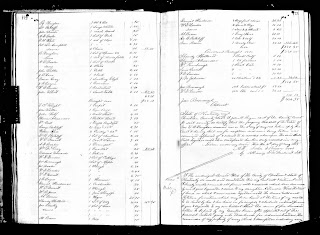While doing research with newspapers, I came across an interesting article about a man named Ansel White in Port Angeles, Washington who was the sole heir of a 4 million dollar estate in New York and apparently never knew it. The man died in 1888 and it wasn't until 1895 when his grand nephew finally found him and his death information, that allowed he and 15 others to inherit the 4 million instead. The nephew traced White from Utica, New York to Missouri, and then to California where it was assumed he drowned in the San Francisco Bay. The nephew put an ad in the paper there and it was answered by a former neighbor of White, confirming the identity of White and his death.
4 million split 16 ways would have been only $250,000, but this was in 1895, and as we all know, $250,000 was worth a lot more in 1895 than it would be today. How much more? Calculating the equivalent worth is complicated and depends on the type of value in question. I like to use MeasuringWorth.com to give me an idea of historical money worth, and in this case, I would use one of the three "Income or Wealth" values.
The "historic standard of living" value would be $7,270,000, the "economic status" or "prestige value" would be $60,400,000, and the "economic power" is $275,000,000. That's still a pretty big range, but it gives you an idea that today, they would have still been multi-millionaires.
In comparison, the original 4 million would have been relative today to a range between 116 million, to 4.4 billion.
Tuesday, September 29, 2015
Wednesday, September 9, 2015
Things You Should Know About The New Probate Records at Ancestry.com
 |
| Christian County, Kentucky Will Book Q, p. 172-173 |
1. Not all records are digitally indexed. I was having difficulty finding anything so I tested it on a will I already had - Leonard Wood in Christian County, Kentucky 1857 (will book Q, p. 173). I couldn't find it with a name search, but did find it by looking manually. It's not a case of it being transcribed wrong, it looks like it's just not indexed at all (the button to bring up the digital index is grayed out on both the will page and the handwritten index pages). I can't even attach to my tree - the only save options are save as web link or save to my computer. Lots of people are going to miss a lot of things when this appears to only be half-indexed.
2. Many of the records were already available on FamilySearch.org. Granted, some of the records were not on FamilySearch, and the benefit Ancestry.com has over FamilySearch is that many of the records are indexed. But as addressed above, not all of them are.
3. Not all collections are complete. For example, the Philadelphia Wills begin in 1838 so anything before that is still not available online (FamilySearch.org doesn't have any Philadelphia probates). They do have earlier years for Administration records though. The date range for each county is difficult to see upfront because the collection is for the whole state, which is then broken down into counties. The specific date range for each county varies and isn't mentioned so you have to look through them to figure it out. Also, not all collections include all counties for that state. For example, the Pennsylvania Probates says it has records for about 90% of PA counties.
4. Not all collections have a manual index. For some, the odd missing digital index isn't a big deal, as many of the collections have a handwritten index in the images which you can manually browse. Unfortunately, not all of them do. The Philadelphia Wills, for example, do not.
Subscribe to:
Comments (Atom)

